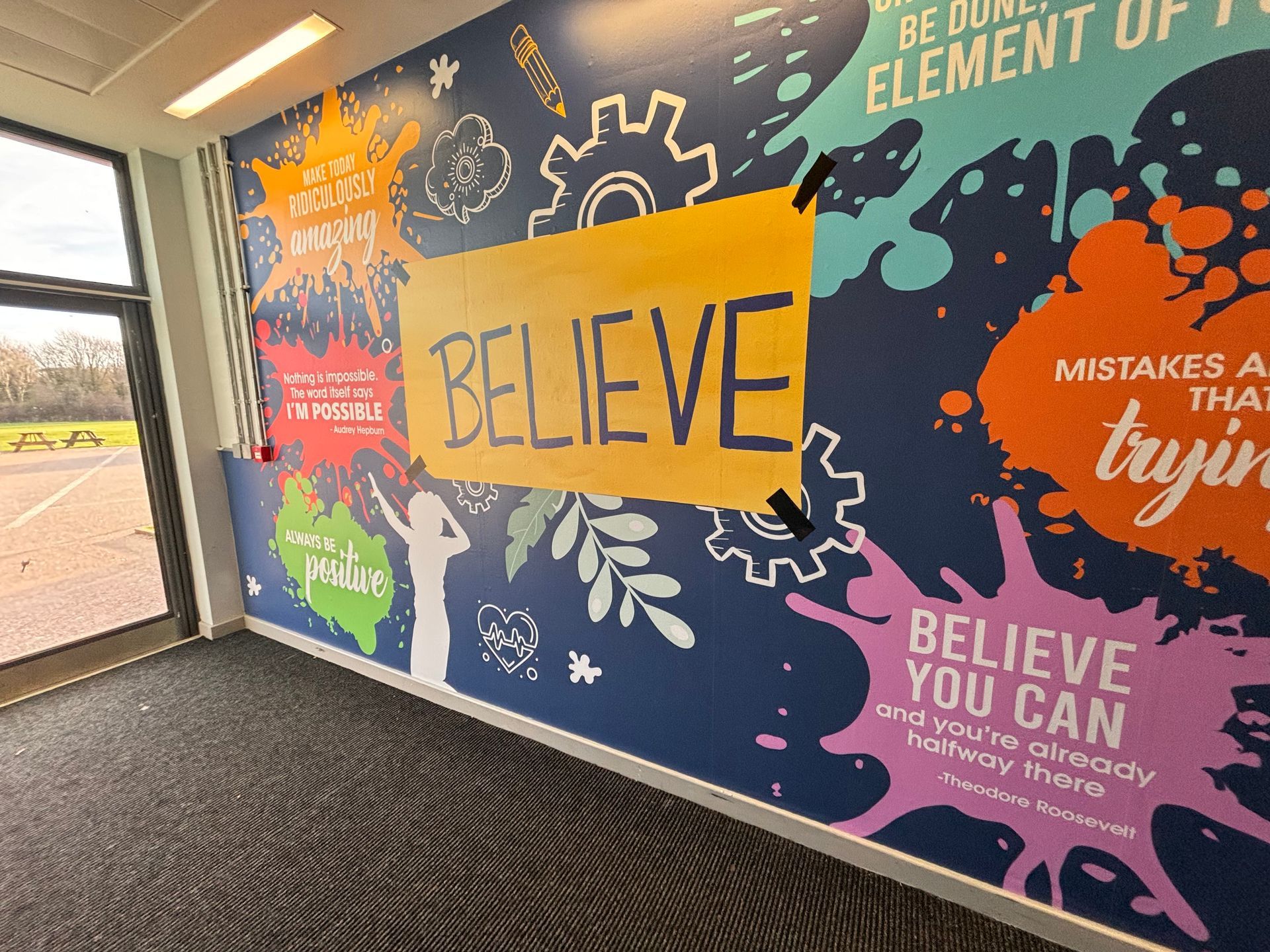Impact on pupils 3
Fostering creativity in schools through wall graphics enhances the appeal and instils a sense of ownership and pride in students. Implementing this strategy effectively involves the following steps;

1. Student Centric Design Approach
- Engage students in workshops and brainstorming sessions to gather ideas and themes for the wall graphics.
- Host design competitions where students can submit their creative designs, with winning entries featured in the final artwork.
2. Interactive Elements
- Incorporate interactive murals that allow students to engage with the artwork, such as sections where they can write or draw.
- Utilise QR codes and augmented reality to link to content created by students, like videos or animations.
3. Theme Variation and Rotation
- Introduce seasonal themes by displaying rotating artworks throughout the year.
- Enhancing school spaces, with student-driven creativity, promotes a sense of belonging and empowerment among learners.
- The decorations on the walls can be updated with themes or designs based on the season's events, holidays, or specific projects happening at school.

Student Exhibits: Set aside areas where students can showcase their artwork and projects regularly, switching them out to give students a chance to display their work.
Collaborative Art Projects;
- Mosaic or Collage Murals: Students can create murals by combining pieces. Each student can contribute to forming a picture, promoting a sense of shared accomplishment.
- Community Projects: Engage students in projects focusing on community themes reflecting shared values, goals or school pride.
Creating Inspiring Educational Environments
Inspirational Quotes and Stories;
- Student-Selected Content: Let students choose or create quotes, stories, and messages that are meaningful to them. These can be prominently featured in the wall decorations.
- Cultural Representation: Integrate elements that honour the heritage of the student population to ensure everyone feels included and appreciated.
Learning Tools and Visual Aids;
- Interactive Study Materials: Incorporate resources like maps, charts, or diagrams to assist students in their studies. Students can provide input to tailor these tools to make them engaging and beneficial.
- Gamification: elements of games, such as into-the-wall graphics like puzzles, scavenger hunts, or trivia questions that promote learning through fun activities.
Execution Plan
1. Engaging the School Community;
- Surveys and Feedback: Use surveys and feedback forms to collect ideas from students, teachers, and parents on the themes and designs they wish to see.
- Student Committees: Establish student committees collaborating with designers to offer input and feedback throughout the design phase.
2. Collaborating with Professionals;
- Artist Collaborations: Team up with artists or art students to guide the process and ensure high-quality results.
- Professional Workshops: Organise artists-led workshops for students to learn about design principles and techniques.
3. Sustainability and Inclusivity;
- Environmentally Friendly Materials: Opt for materials and methods in creating wall graphics that align with eco values.
- Inclusive Design: Ensure the designs are inclusive and accessible to all students, considering aspects such as visibility and cultural considerations.
4. Continuous Engagement;
- Feedback Mechanism: Establish a process for feedback and suggestions from students and staff to enhance and update the wall graphics continuously. When new wall graphics are put up, schools can host unveiling events or celebrations to showcase student involvement and boost community spirit.
Engaging students in designing and installing wall graphics helps schools establish spaces that reflect the creativity and variety of the student population, promoting stronger bonds and a greater sense of belonging.







